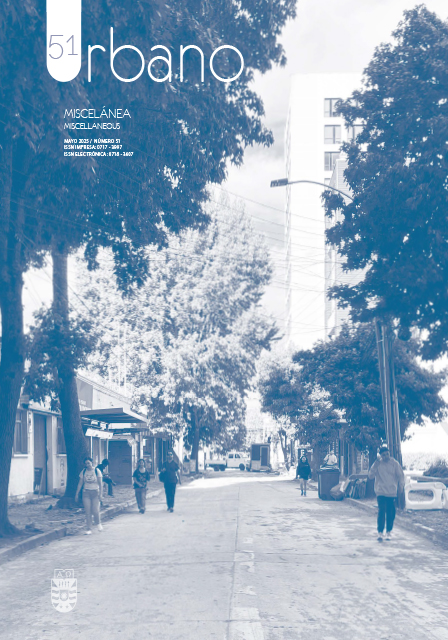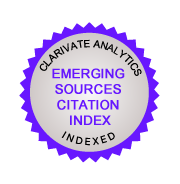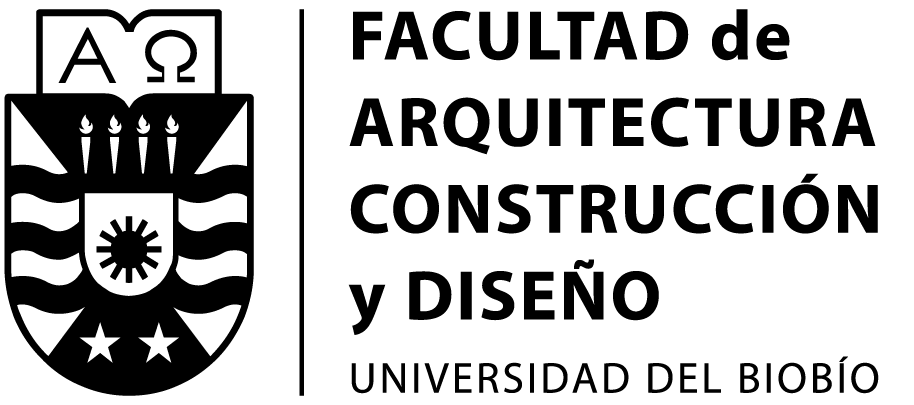Post-disaster disasters. One-dimensional policies without post-disaster assessment and recurrence of disasters: The case of Nonguen,Chile, as a characteristic case of unsound policies
DOI:
https://doi.org/10.22320/07183607.2025.28.51.03Keywords:
territorial policy, urban settlements, natural disasters, urban management, reconstructionAbstract
Multidimensional analysis is a governance-based public policy tool that considers multiple analysis variables to respond to disaster risks effectively. Although there are several examples in the international arena, no such guidance has been developed in Chile for the administration’s disaster response. Existing public policies for disaster risk management in Chile, specifically those applied in the post-disaster stage, are designed to strengthen institutionality and develop programs and strategies focused on catastrophe management, shaping actions that aim to reduce vulnerability and handle recovery processes. What do we know about the effects of these policies in the regions? This research analyzes how the absence of instruments to assess these results prevents understanding the performance and effectiveness of the plans applied. Based on a multidimensional evaluation of the Nonguén neighborhood in Concepción, Chile, a typical example of misguided public policies is characterized, explaining how ill-advised interventions can exacerbate existing problems. This neighborhood continues to grow and develop in a flood risk zone, albeit aware of this condition, thanks to records dating back 100 years before urbanization began. It is concluded that the public response, based on unidirectional approach interventions that disregarded the inhabitants' problems, has increased vulnerability to risk and a recurrence of damaging disasters. A post-disaster assessment using a multidimensional perspective of the habitat would allow intervening areas with projects that give rise to future development processes.
Downloads
References
BALBOA, V., CARRASCO, C., y VALENZUELA, K. (2019). Vulnerabilidades territoriales: Análisis de las respuestas de las mujeres en situaciones de desastres relacionadas con el clima y el agua en el sector de Nonguén de la ciudad de Concepción [Tesis de Licenciado en Arquitectura]. Universidad del Bío-Bío.
BERKE, P. R., KARTEZ, J., y WENGER, D. (1993). Recovery after Disaster: Achieving Sustainable Development, Mitigation and Equity. Disasters, 17(2), 93-109. https://doi.org/10.1111/j.1467-7717.1993.tb01137.x
BURDILES, R., SAAVEDRA, J., CARRASCO-RUBIO, C., y VALENZUELA-CONTRERAS, K. (2023). Gobernanza local de Riesgo, desastres en áreas metropolitanas. Caso del Valle Nonguén, Concepción, Chile. Letras Verdes. Revista Latinoamericana De Estudios Socioambientales, (33), 7–25. https://doi.org/10.17141/letrasverdes.33.2023.5450
CANESE DE ESTIGARRIBIA, M. I., VUYK ESPÍNOLA, C. M., GONZÁLEZ CHAMORRO, R., BRITEZ ACUÑA, A. A., LEZCANO VILLAGRA, J. C. y PRIETO GRANADA, V. L. (2022). Dimensiones y desafíos de la participación ciudadana en la gestión de riesgo de desastres en Asunción, Área Metropolitana y Bajo Chaco, Paraguay. Revista de Estudios Latinoamericanos sobre Reducción del Riesgo de Desastres REDER, 6(1), 112-123. https://doi.org/10.55467/reder.v6i1.87
FONTANA, S. E. y CONRERO, S. (2023). Políticas y prácticas para la gestión del riesgo de desastres en gobiernos locales argentinos: análisis colaborativo entre actores académicos y gubernamentales. Revista de Estudios Latinoamericanos sobre Reducción del Riesgo de Desastres REDER, 7(1), 6-20. https://doi.org/10.55467/reder.v7i1.104
GAILLARD, J.-C. (2007). Resilience of traditional societies in facing natural hazards. Disaster Prevention And Management, 16(4), 522-544. https://doi.org/10.1108/09653560710817011
GONZALEZ GONZALEZ, L. E. (2017). Gestión Territorial post 27-F en Chile: Implicancias sobre el Hábitat Residencial. Bitácora Urbano Territorial, 27(2), 109–116. https://doi.org/10.15446/bitacora.v27n2.48322
GORDILLO BEDOYA, F. (2006). Hábitat transitorio y vivienda para emergencias por desastres en Colombia. Universidad Nacional de Colombia.
GUHA-SAPIR, D., VOS, F., BELOW, R. y PONSERRE, S. (2010). Annual Disaster Statistical Review 2010: The numbers and trends. Centre for Research on the Epidemiology of Disasters (CRED)
Université catholique de Louvain. https://www.cred.be/sites/default/files/ADSR_2010.pdf
La Oficina de las Naciones Unidas para la Reducción del Riesgo de Desastres [UNDRR]. (2015). Marco de Sendai para la Reducción del Riesgo de Desastres 2015-2030. https://www.unisdr.org/files/43291_spanishsendaiframeworkfordisasterri.pdf
LARENAS SALAS, J. (2016) El desafío de la pertinencia sociocultural en la actuación del Estado ante desastres socionaturales en Fundación Vivida (Org.), Reflexiones sobre la emergencia: territorio, vivienda e institucionalidad en contextos de desastres socioambientales (42-55). Fundación Vivienda. https://repositorio.uchile.cl/handle/2250/141922
LEÓN ARAVENA, J. A., SARAVIA CORTÉS, F. A., y BISBAL, I. (2018). Desafíos para la gobernanza en espacios periurbanos metropolizados: el caso de Nonguén, en Concepción, Chile. Revista Pensamiento y Acción Interdisciplinaria, 4(2), 24-43. https://doi.org/10.29035/pai.4.2.24
MILETI, D. (1999). Disasters by Design: A Reassessment of Natural Hazards in the United States. Joseph Henry Press. https://doi.org/10.17226/5782
MOLINARI, D., MENONI, S., y BALLIO, F. (Eds.). (2017). Flood damage survey and Assessment: New insights from research and practice. Wiley. https://www.doi.org/10.1002/9781119217930
OLIVERA, A., y GONZÁLEZ, G. (2010). Enfoque multidimensional de la reconstrucción postdesastre de la vivienda social y el hábitat en países en vías de desarrollo: Estudios de casos en Cuba. Revista de la Construcción, 9(2), 53-62. https://doi.org/10.4067/s0718-915x2010000200006
Oficina Nacional de Emergencia del Ministerio del Interior [ONEMI]. (2020). Política nacional para la reducción del riesgo de desastres. Plan estratégico nacional 2020-2030. https://emergenciaydesastres.mineduc.cl/wp-content/uploads/2021/04/POLITICA-NACIONALGESTIO%CC%81N-REDUCCIO%CC%81N-DEL-RIESGO-DE-DESASTRES-2020-2030.pdf
QUARANTELLI, E. L. (1998). Disaster recovery: Research based observations on what it means, success and failure, those assisted and those assisting. Disaster Research Center DRC, University of Delaware, Preliminary paper, (263), 1-16. http://cidbimena.bvs.hn/docum/crid/Abril2004/pdf/eng/doc11477/doc11477-contenido.pdf
RASHED, T. y WEEKS, J. (2003). Assessing vulnerability to earthquake hazards through spatial multicriteria analysis of urban areas. International Journal Of Geographical Information Science, 17(6), 547-576. https://doi.org/10.1080/1365881031000114071
RINALDI, A. y BERGAMINI, K. (2020). Inclusión de aprendizajes en torno a la gestión de riesgo de desastres naturales en instrumentos de planificación territorial (2005 - 2015). Revista de geografía Norte Grande, (75), 103–130. http://dx.doi.org/10.4067/S0718-34022020000100103
ROJAS, O., MARDONES, M., ARUMÍ, J. L., y AGUAYO, M. (2014). Una revisión de inundaciones fluviales en Chile, período 1574-2012: causas, recurrencia y efectos geográficos. Revista de geografía Norte Grande, (57), 177-192. https://doi.org/10.4067/s0718-34022014000100012
SANDOVAL-DÍAZ, J. (2020). Vulnerabilidad-resiliencia ante el proceso de riesgo-desastre: Un análisis desde la ecología política. Polis (Santiago), 19(56), 214-239. https://polis.ulagos.cl/index.php/polis/article/view/419/323
TAPIA, R. (2015). Terremoto 2010 en Chile y vivienda social: resultados y aprendizajes para recomendación de políticas públicas [Tesis Doctoral, Universidad Politécnica de Madrid]. Repositorio Institucional - Universidad de Chile. https://repositorio.uchile.cl/handle/2250/138531
VILLACRESES VITERI, C. G. (2024). Análisis de la resiliencia territorial multidimensional frente al riesgo de desastres naturales en Manabí (Ecuador) [Tesis Doctoral, Universidad de Alicante]. Repositorio Institucional de la Universidad de Alicante (RUA). http://hdl.handle.net/10045/143596
Downloads
Published
How to Cite
Issue
Section
License
Copyright (c) 2025 Denisse Schmidt-Gómez , Ignacio Bisbal-Grandal , Javiera Pavez-Estrada

This work is licensed under a Creative Commons Attribution-ShareAlike 4.0 International License.
The content of articles which are published in each edition of Habitat Sustentable, is the exclusive responsibility of the author(s) and does not necessarily represent the thinking or compromise the opinion of University of the Bio-Bio.
The author(s) conserve their copyright and guarantee to the journal, the right of first publication of their work. This will simultaneously be subject to the Creative Commons Recognition License CC BY-SA, which allows others to share-copy, transform or create new materials from this work for non-commercial purposes, as long as they recognize authorship and the first publication in this journal, and its new creations are under a license with the same terms.![]()























